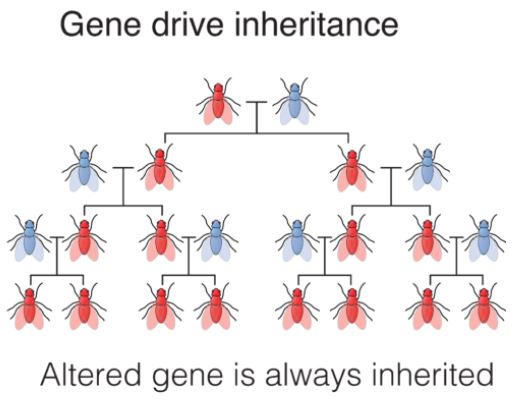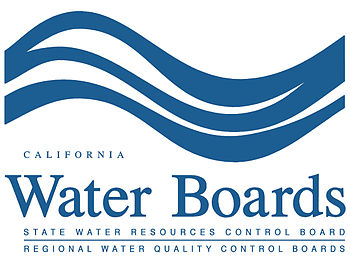Regulation
Gene Drives, Biodiversity Conservation, International Law, and Emerging Politics
My latest article is published by Global Environmental Politics
A set of new biotechnologies are being developed that will force many of us, especially those concerned about biodiversity loss, to re-examine how we understand the relationship between biotechnology and conservation. These are “gene drives,” which would be used to genetically modify, reduce, or eliminate populations of species. My paper “Governing New Biotechnologies for Biodiversity …
Continue reading “Gene Drives, Biodiversity Conservation, International Law, and Emerging Politics”
CONTINUE READINGSherlock Holmes and the Mystery of the Job-Killing Regulations
In which Holmes confronts his strangest and most perplexing case.
[I’m re-upping this 2014 post since the “job-killing regulation” meme has resurfaced at the GOP Convention. The scene is Holmes’s apartment at 221B Baker Street.] “When the prospective client arrives, Watson, you’ll find that he’s a politician, that his electoral base is devoted to Fox News, and that he gets campaign contributions from fossil fuel …
Continue reading “Sherlock Holmes and the Mystery of the Job-Killing Regulations”
CONTINUE READINGTrump Administration’s Court Challenge to California-Quebec Cap-and-Trade Agreement Again Rejected
U.S. District Court Rejects Feds’ Latest Constitutional Attack on California’s Climate Change Initiative
Three strikes and you’re out. That adage, particularly timely given Major League Baseball’s belated start of its 2020 season this week, is just as apt when it comes to litigation as it is to our nation’s pastime. For the second time in four months, U.S. District Court Judge William Shubb has rejected a constitutional challenge …
CONTINUE READINGMembers of Congress Oppose Trump Administration’s Attempt to Revoke California’s Clean Car Standards
UCLA Law’s Frank G. Wells Environmental Law Clinic files a brief on behalf of 147 members of Congress in the D.C. Circuit
California has long led the fight against pollution from passenger vehicles, setting its first car emissions standards in 1966 before federal rules were established. After the Clean Air Act was passed in 1970, California retained authority to establish a series of more stringent vehicle emissions rules—with the most recent iteration of greenhouse gas emissions standards …
CONTINUE READINGCalifornia Appellate Court Upholds Water Board’s Broad Drought Response Authority
Court of Appeal Rejects Water Users’ Legal Challenge to Board’s Emergency Regulations, Temporary Curtailment Orders
California’s Court of Appeal for the Third Appellate District recently upheld the State Water Resources Control Board’s temporary emergency drought response regulations–enacted in 2014-15–as well as related curtailment orders the Board issued to specific water users to implement those regulations. In doing so, the Water Board rejected a legal challenge agricultural water users brought against …
Continue reading “California Appellate Court Upholds Water Board’s Broad Drought Response Authority”
CONTINUE READINGLessons from the DACA Ruling
The Court’s ruling could have important implications for environmental cases.
The Supreme Court’s ruling in Department of Homeland Security v. UC Regents was great news for 700,000 “Dreamers” who would otherwise face deportation. It also has important implications for administrative law — and for environmental law cases in particular. Here are three main takeaways. Requiring Reasoned Explanation. Chief Justice John Roberts reinforced the principle that …
Continue reading “Lessons from the DACA Ruling”
CONTINUE READINGA New Report on Governing Climate Geoengineering
I suggest steps toward global governance of carbon dioxide removal and solar geoengineering
A new report on the governance of climate geoengineering — that is, carbon dioxide removal (CDR) and solar geoengineering (or solar radiation modification, SRM) — has been released. International Governance Issues on Climate Engineering: Information for Policymakers was coordinated and issued by the International Risk Governance Center, edited by IRGC’s Marie-Valentine Florin, and commissioned by the …
Continue reading “A New Report on Governing Climate Geoengineering”
CONTINUE READINGDC Circuit Restricts “Housekeeping” Regulations
The Trump Administration likes to justify policy initiatives based on vague grants of authority. That’s just become harder.
Earlier today, the D.C. Circuit Court of Appeals decided two cases that add to the legal difficulties the Trump EPA will face in court. The difficulties relate to two proposed EPA rules that attempt to hamstring future efforts to impose tighter restrictions on pollution. Both EPA rules rely on vague, general grants of rule-making authority …
Continue reading “DC Circuit Restricts “Housekeeping” Regulations”
CONTINUE READINGNEPA, emergencies and executive power
Once more we need to ask, can Trump do what he claims to be doing?
Late Thursday, the White House issued another in a seemingly endless series of administrative orders. Under the typically overblown title “EO on Accelerating the Nation’s Economic Recovery from the COVID-19 Emergency by Expediting Infrastructure Investments and Other Activities,” it was touted by the President’s team as a way to speed infrastructure permitting and another step …
Continue reading “NEPA, emergencies and executive power”
CONTINUE READINGFailures of the Heart
Does anyone in the Administration actually care about police killings? Or public health? Or future generations?
“I REALLY DON’T CARE DO U?” That slogan embodies much about the Trump Administration. That includes Trump’s response to the death of George Floyd and the ensuing demonstrations. But it includes much else. Including police killings and the coronavirus. “I REALLY DON’T CARE DO U?” is emblazoned on a jacket of Melania Trump’s. She wore …
Continue reading “Failures of the Heart”
CONTINUE READING










